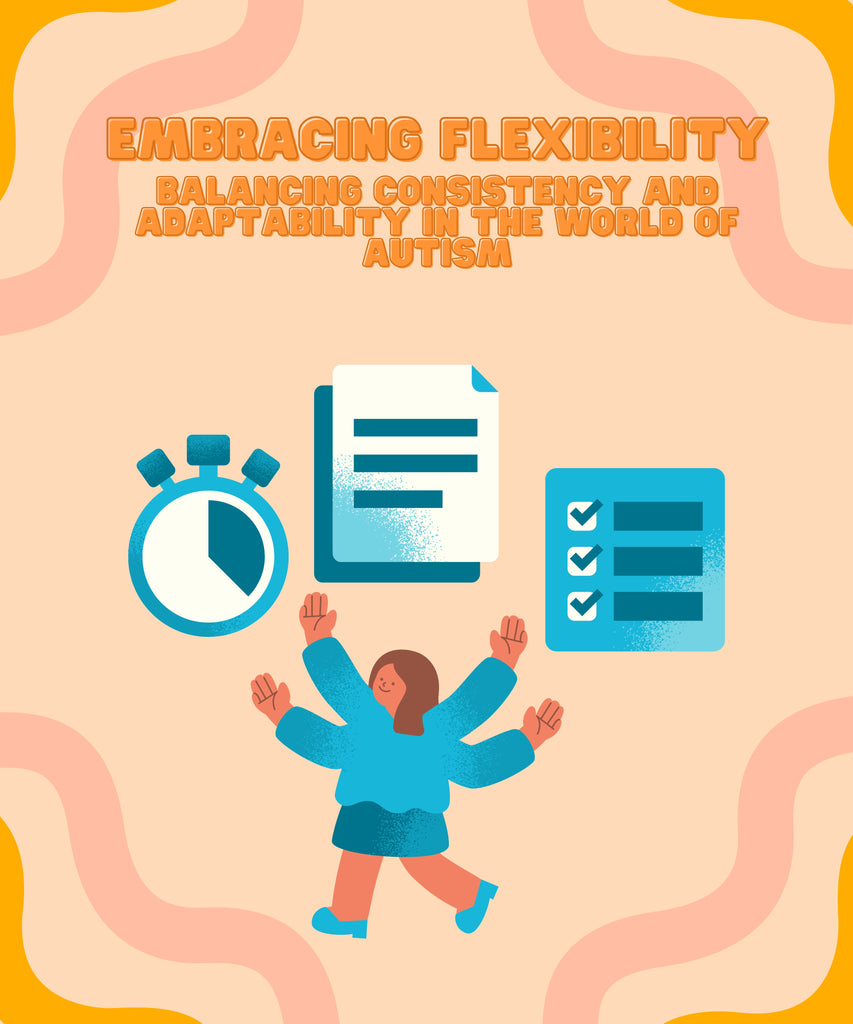
Hello to all parents, caregivers, educators, and friends within our inspiring autism community. If there's one thing we've learned on this shared journey, it's that the autism experience is anything but static. As we explore this journey further, let's talk about the intricate balance between routine and flexibility, two important elements for fostering growth and well-being.
Life with autism is often described as a spectrum, mirroring the endless variability in how individuals perceive and interact with the world. Our perspectives, behaviors, needs, and coping mechanisms can be vastly different. Yet, one common thread that often emerges is the desire for consistency and routine. However, just as critical is our ability to incorporate flexibility, learning to adapt when needed and understanding that some days may present more challenges than others.
The Power of Routine in Autism
Routines, schedules, and predictability can provide comfort and security to individuals on the autism spectrum. The world can sometimes feel overwhelming and chaotic, and a structured routine serves as an anchor, offering stability amidst the ever-changing tide of life.
Routine gives a sense of order, a predictable pattern that reduces anxiety and uncertainty. It helps individuals on the autism spectrum to understand what comes next, facilitating a smoother transition between activities or environments.
Embracing Flexibility
While routines play a pivotal role in managing daily life, the world doesn't operate in predictability alone. Circumstances can change rapidly, and unexpected situations can and do arise. As much as we might wish for a perfectly orchestrated day, life is inherently unpredictable.
Flexibility, therefore, becomes an essential skill to cultivate, allowing for adaptation to the natural flow of life. It can be a tough skill to master, especially for those on the autism spectrum. However, it's vital to remember that developing flexibility doesn't mean discarding routine entirely. It's about finding a balance.
Strategies for Cultivating Flexibility
Recognizing the importance of flexibility is just the first step. How can we help our loved ones on the spectrum incorporate flexibility into their routines? Here are a few strategies:
1. Introduce small changes: Gradually introduce variability into the routine. This could mean trying a new food, taking a different route to school, or introducing a new activity into the daily schedule. It's important to start small and to offer plenty of reassurance and support throughout.
2. Use visual aids: Visual schedules, social stories, and other visual aids can help explain changes and make them more manageable. They allow individuals on the spectrum to understand what to expect, reducing anxiety and easing the transition.
3. Prioritize communication: Always explain changes and the reasons behind them. Use simple, clear language to convey the necessity of adjustments. Let your loved one know that it's okay to feel uneasy about changes, and validate their emotions.
4. Model flexibility: Show them how you adapt to changes in your own routine. Your reactions can provide a guide for their own, teaching them that it's okay when things don't go as planned.
5. Celebrate successes: Praise efforts to adapt, no matter how small. Positive reinforcement can help motivate continued attempts at flexibility.
The Dance Between Consistency and Adaptability
Routines serve as a scaffold, providing structure and predictability. Flexibility, on the other hand, serves as the cushion, preparing us for the unexpected and helping us adapt to the dynamic nature of life. Balancing these two can be a delicate dance, especially for those navigating life on the autism spectrum.
We must always remember that some days may be more challenging than others. Be patient. Be kind. Be ready to adjust the routine when needed, and celebrate the victories, no matter how small they may seem.
Life with autism is a rich collection of experiences and perspectives, a beautiful and diverse spectrum. Embracing both routine and flexibility helps ensure that we can navigate this life as smoothly as possible, always growing, always learning, and always embracing the wonderfully unique ways in which we perceive and interact with the world.
Remember, every step taken towards cultivating flexibility, no matter how small, is a step towards a more adaptable and resilient future for our loved ones on the autism spectrum. Keep dancing the dance and keep believing in the journey.
If you found this blog post helpful, please share it with others in the autism community. Together, we can continue to learn, grow, and support each other on this journey. Until next time, keep dancing the dance of flexibility and routine, and remember, every step matters.

